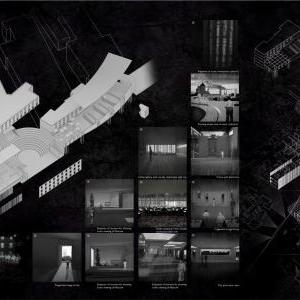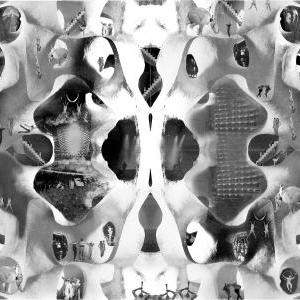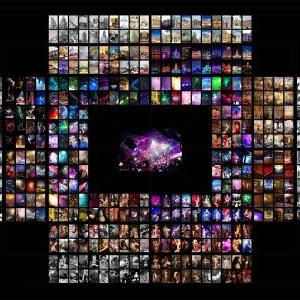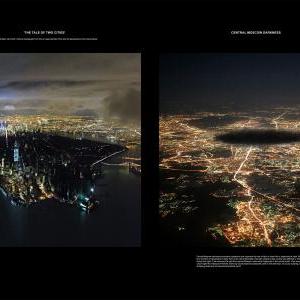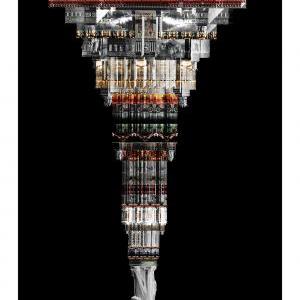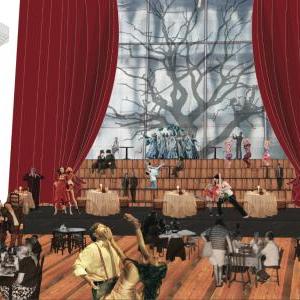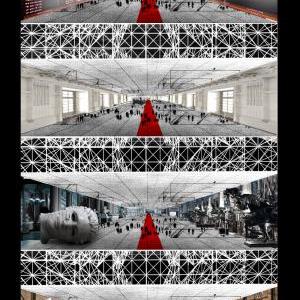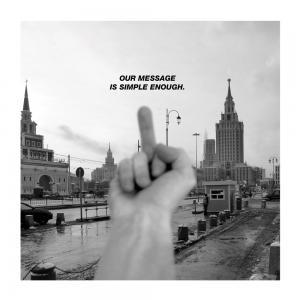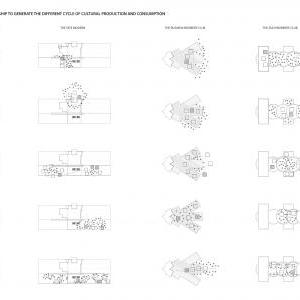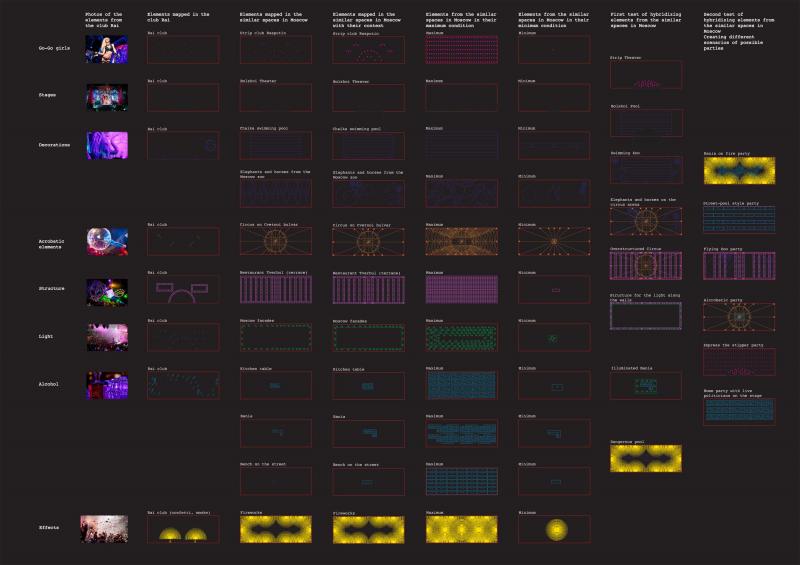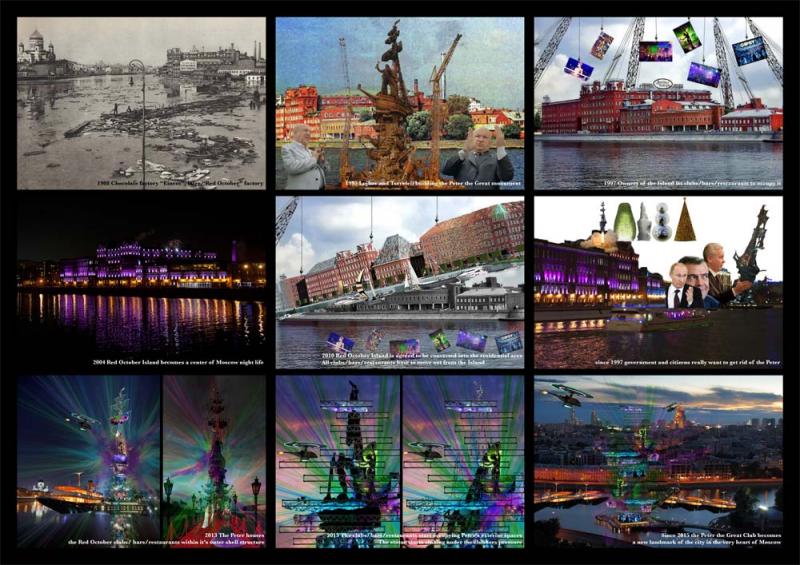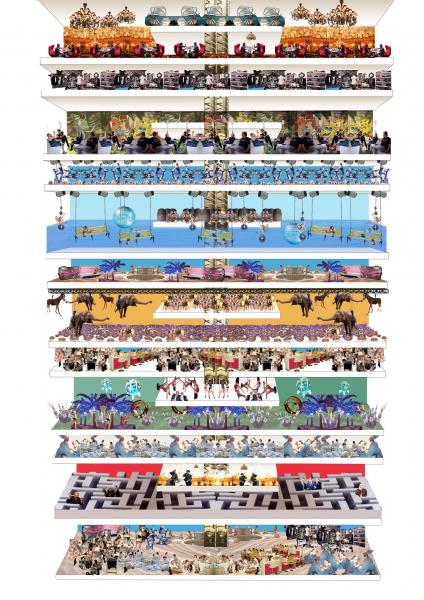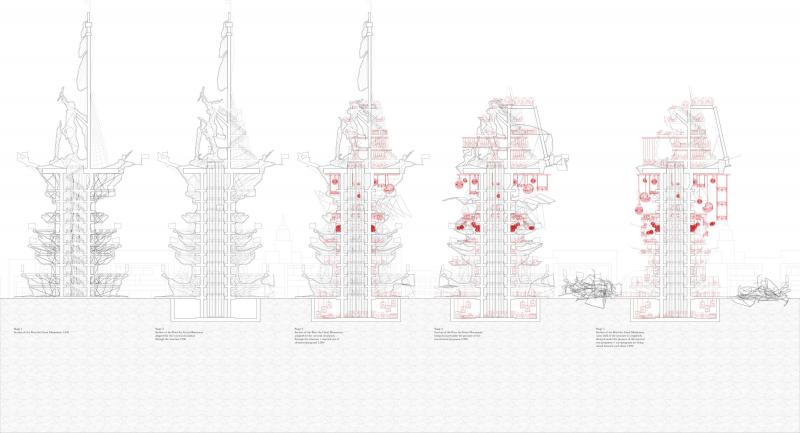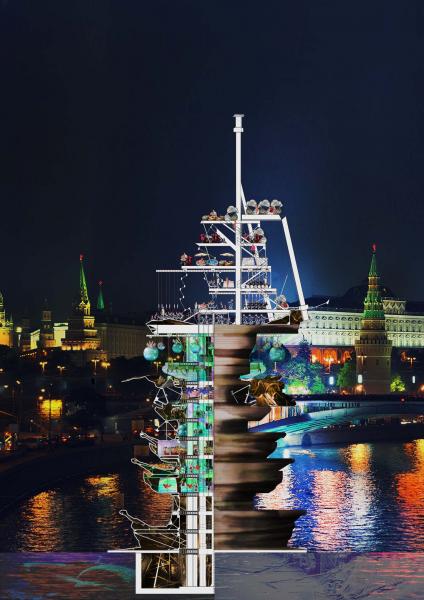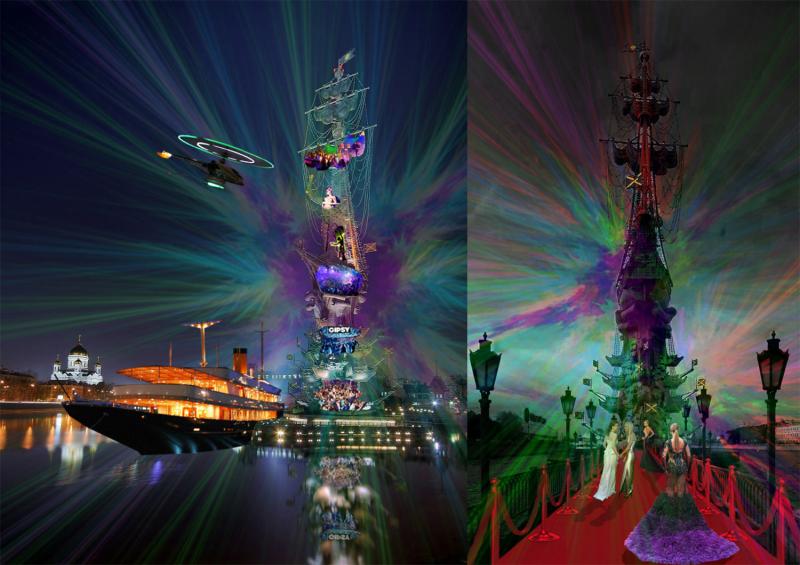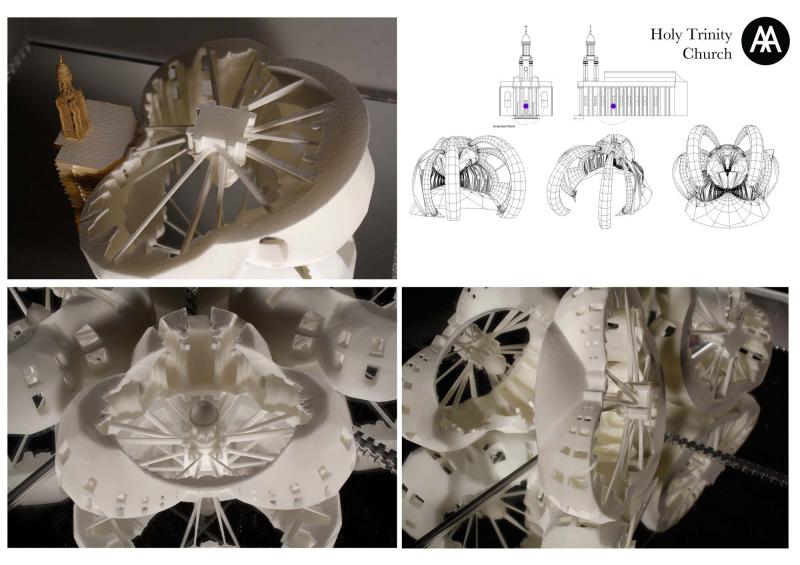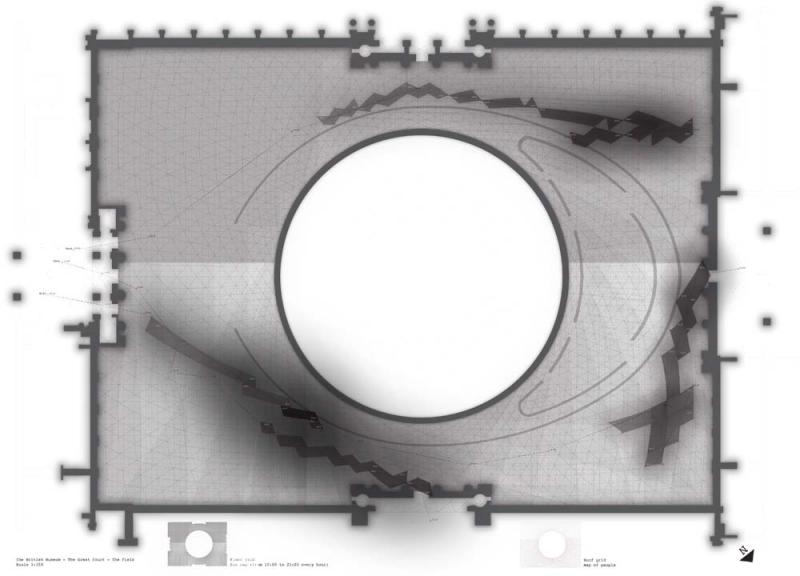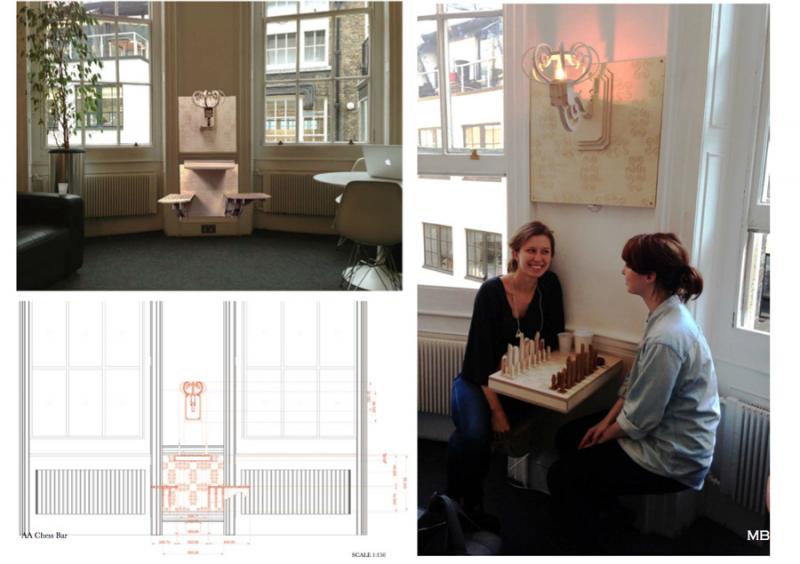Intermediate 7 develops conceptual models and diagrammatic frameworks that mediate between urban systems, architectural precedents and design approaches. We focused on visionary social machines in the context of Moscow’s nightlife in order to explore the ‘condenser club’ – the ultimate mixer and catalyst. Emphasising pragmatic research, infrastructural logic and relaxed methods, the projects delineated three areas of enquiry.
First, we examined the boundaries between the city and the ‘anti-city’. Dissident zones and decadent ‘infernos’ tantalised us with illusions of escape or entrapment. Acting as blenders and separators, nested megastructures collapsed numerous fragments and constructed trajectories along interwoven transcripts. These dystopian-realist scenarios remained aptly in-between fantastic provocations and pragmatic solutions to the city’s ills. Second, we synthesised infrastructures of flow and organisation to generate hybrid typologies.
We engineered social systems: networks and circuits loaded with programme. Conveyors of food chains, spines of art-factories and corridors of metro-labyrinths played on reversals of service and spectacle.
These decorated diagrams linked functionalist structures with intricate shapes and surfaces. Finally, we explored audience/performer relation-ships in adaptable sets. We injected dormant landmarks with dynamic mixtures of elements to facilitate mergers and crossovers. From flying-zoos and banya-bars to mood-tunnels, theatrical devices choreographed movements, framed images and staged atmospheres. As kaleidoscopic centrifuges, extravagant infrastructures and social transformers, our condensers dealt with extremes of functional intensity, material density and visual excess. Spectacular machines affected the operational appearance of the city, as captured in our diagrammatic matrices, hybrid drawings and visual scenarios.
Staff
Maria Fedorchenko
Tatiana von Preussen
Thanks to our workshop guests
João Bravo da Costa
Dirk Lellau
Jessica Reynolds
Gergely Kovacs
Ingrid Shroeder
Antoine Vaxelaire
Thanks to
Joseph Bedford
Brendon Carlin
Mark Campbell
Barbara-Ann Campbell-Lange
Monia De Marchi
Kenneth Fraser
Maria Mileeva
Kostas Grigoriadis
Eugene Han
Francesca Hughes
Sam Jacoby
Rosalie Kim
Fabrizio Matelana
Kathy O’Donnell
Damian Rogan
Nathalie Rozencwajg
Eva Sopeoglou
Brett Steele
Takero Shimazaki
Naiara Vegara
Thomas Weaver
and all other critics and guests
Maria Broytman
Ecstatic sets
No-stop Bling-Bling
Statement:
By taking the existing extremes of Putin’s era of luxury consumption, the project provokes the possible results of the future 11 years of his presidency. Architecturally the project is challenging the idea of the contradictive statue Peter the Great being a new home for the best places that Moscow nightlife is know for in one stack. Where programs are presented through series of sets of hybridized elements. Over the time the insertions take over the statue and lead it to decay that should be read as a metaphor of the partying culture dominating cultural values.
Social condenser:
By using existing props spread around Moscow and bringing them together in programmatic sets it allows different programs to be mixed and collapsed. In this sense I believe that every programs brings different users with it. So that is how various of social groups get condensed and thereby forcing the space being constructed with different sets of props and elements.
Monument:
Most of the Muscovites perceive the Peter the Great monument as a very disturbing ugly object in the middle of Moscow. As it was not originally built for this site and not even for Moscow, it could be considered as a failure from the very beginning.
